
Perfecting the soft-cooked egg has made me curious about which other methods of cooking eggs I can learn to do just right. Eggs, after all, are one of the most delicious additions to any meal—don’t you agree? They’re simple, and yet deceptively so: they can go oh-so wrong. So for the next few weeks, I’m going to write a series of posts on perfect cooked eggs.
Up today: Scrambled. Though I know I few folks with a preference for well-done scrambled eggs, it’s my belief that they are, well, wrong. Most likely they just grew up with overcooked eggs (because that’s the most common sin when it comes to the otherwise easy—and sure, default when your omelet failed–task of scrambling eggs). In fact, scrambled eggs should be fluffy and tender, neither dry nor wet but more the latter than the former. They should be creamy and seasoned and rich.
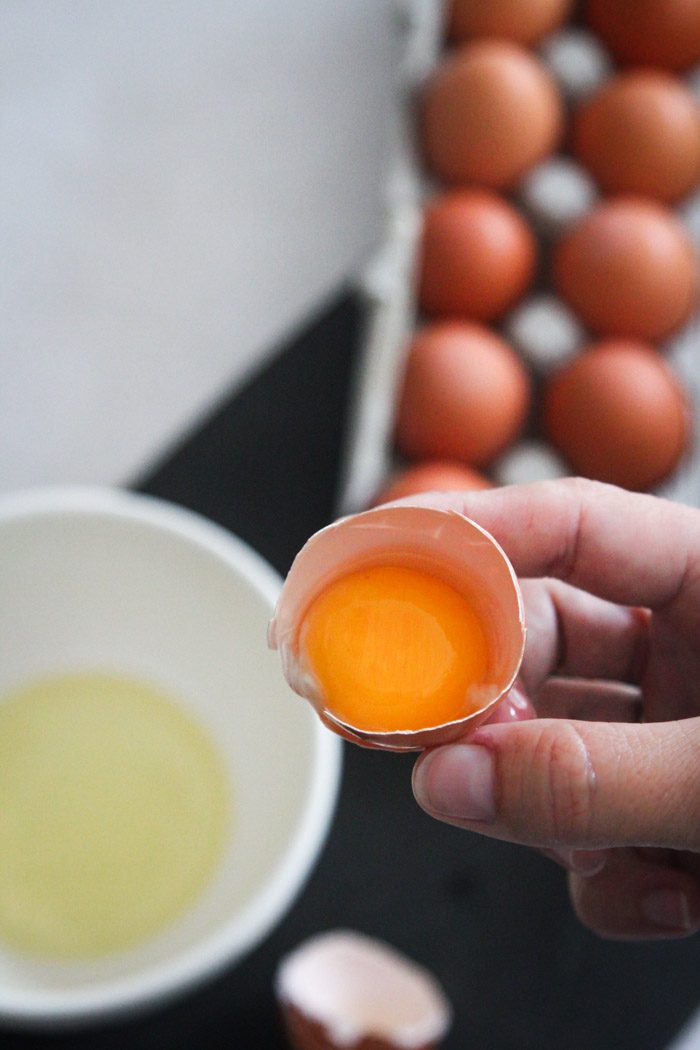
Of course I turned to my favorite resource once again, Cooks Illustrated, for suggestions. I especially liked their suggestion of adding an egg yolk for every four eggs.
In fact, there are two keys to perfect eggs: higher fat and a mindful eye. (Again, don’t overcook!)
Most recipes, I discovered, advocate increasing the fat level in your mix—often through the addition of half-and-half. But I find that while I’m likely to have an extra egg on hand any given morning, it’s more rare that I have half-and-half. Increasing the yolk content means you still have a higher fat content (which helps prevent overcooking), but that you also have a richer flavor. If you would prefer to skip the step, just be sure your dairy is half-and-half (or add a little cream).
So starting with 2-3 eggs per person, add one yolk for every four eggs (or one for three if you’re making a single serving).
To separate an egg, you have two options. First option: Crack your egg at the midline and hold your two cups (one with egg white, and one with yolk and white) over a bowl and slide the yolk back and forth as you discard the whites from one half-shell into a bowl (or the drain, if you have no intention to use egg whites). Careful not to pierce the yolk. Repeat until the yolk is as clean of egg white as it can be (some white with the yolk is fine, especially in this case). Second option: Wash your hands carefully. Crack the egg into your slightly spread hand (over a bowl or the sink) and gently catch the yolk, keeping it intact while the white drain through your fingers. Add the yolk where needed and wash your hands again!
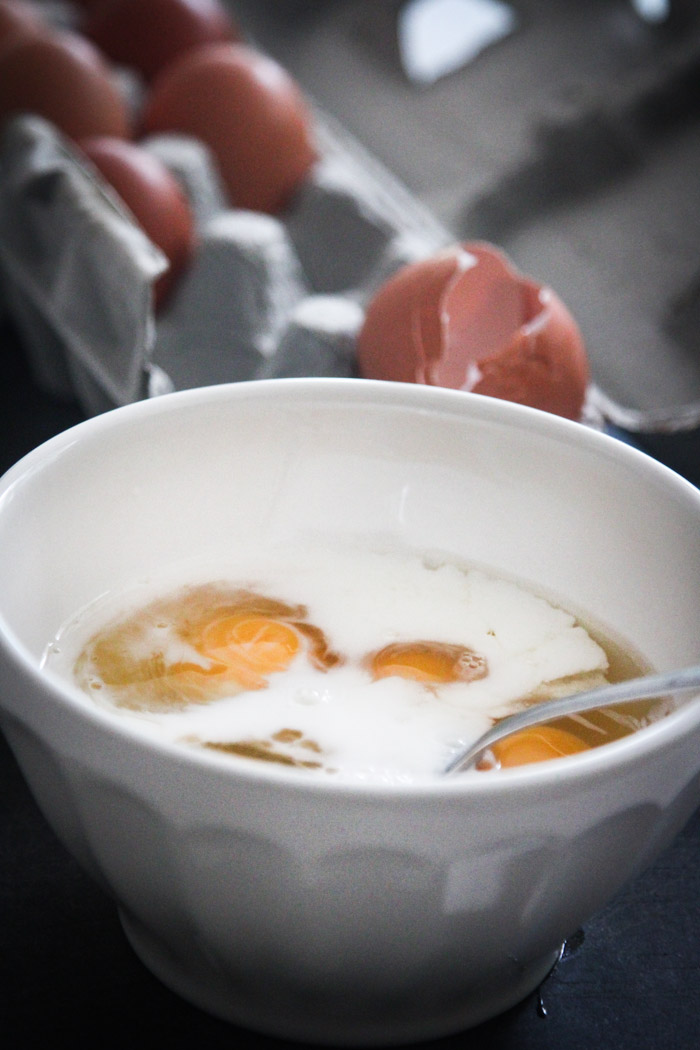
Once you have your desired number of eggs, you’re ready to mix them in a bowl. Start with:
4 eggs and 1 egg yolk
2 T milk (or half-and-half, if you have it)
salt and pepper (be generous, roughly 1/8-1/3 t of each)
Beat the mixture with a fork until everything is combined and you have a sunny yellow mix.
Grab a smaller pan than you might initially think (8 or 10-inch is better than 12) to trap more steam. Next, set your burner to medium heat. When you add your butter (about 1/2 T), it should be hot enough that the butter melts right away but doesn’t immediately rush to foam. If it does, turn your burner down. Once you are happy with the temperature and have coated your pan with butter, you’re ready to pour in the egg mixture.
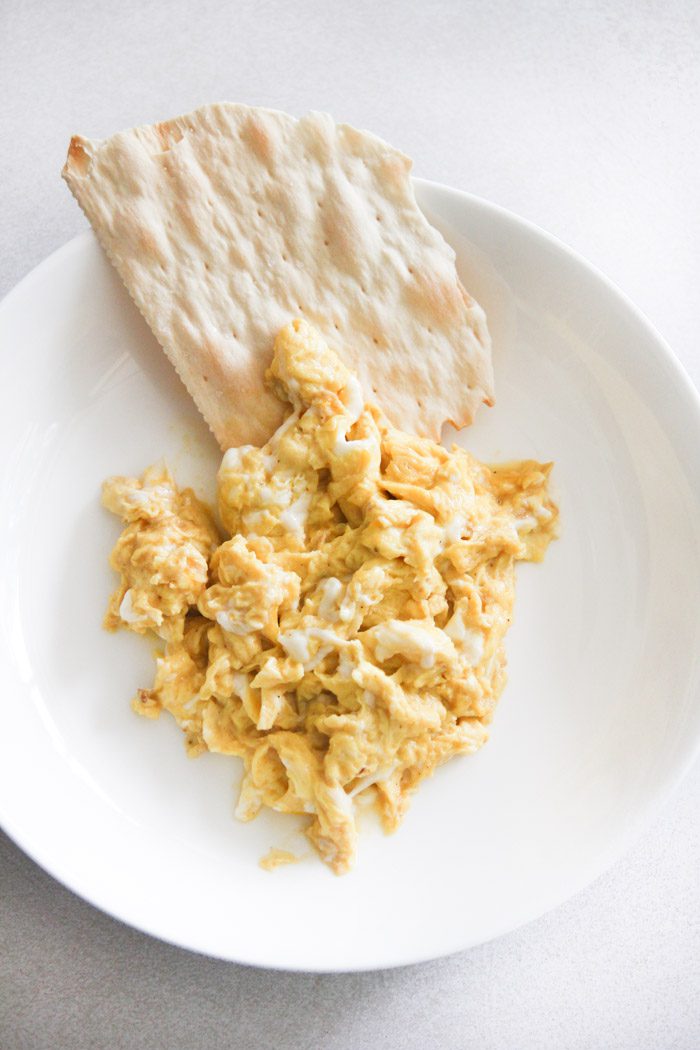
Constantly scrape a rubber spatula, along the bottom and sides of the pan until the eggs begin to clump, letting the runnier bits fill in the gaps. This should happen quickly (a minute perhaps). Reduce heat to low and keep gently folding the eggs until just slightly wet, perhaps a minute more (or less). The second all of your eggs are clumped (yet still creamy and loose), transfer them to a warm plate and serve immediately.
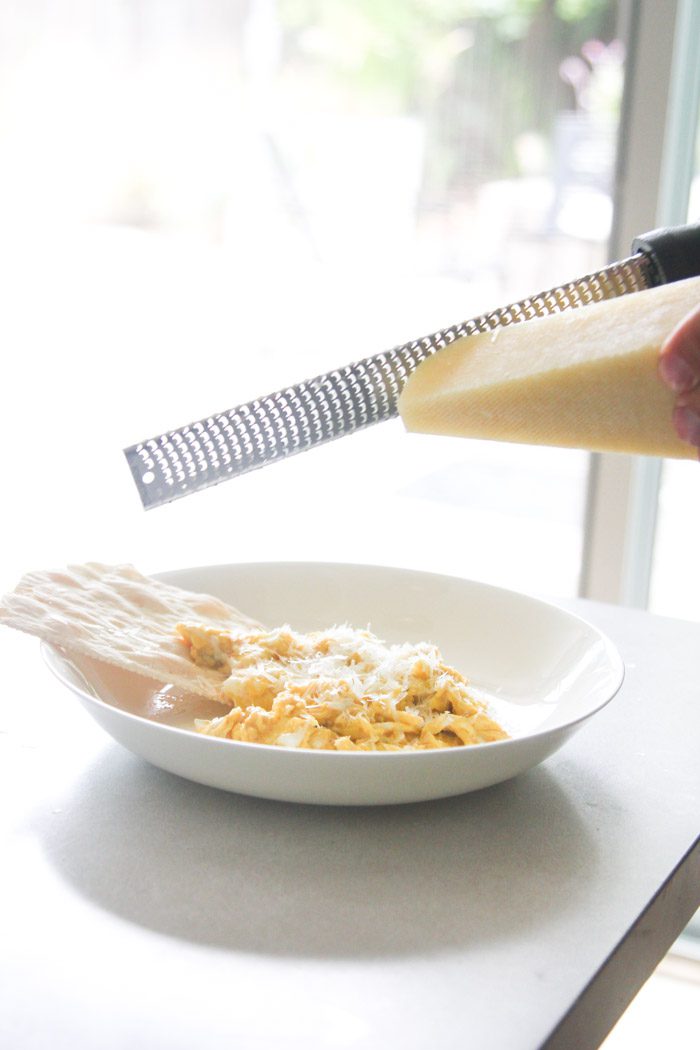
At a bare minimum, you’ll want to add some more salt to taste. They’re plenty delicious with nothing more. But my favorite scrambled eggs of late are a version of the Cacio e Pepe Eggs I once had at Maialino in New York City. You can add Pecorino and a generous serving of black pepper while the eggs are still cooking, folding it all in, or just add cheese and pepper once you’re done. I opted for the latter.
For 4 eggs, I’d add anywhere from 1/4 to 1/2-cup of Pecorino cheese and at least a tablespoon of freshly ground pepper (white would look lovely if you have it).
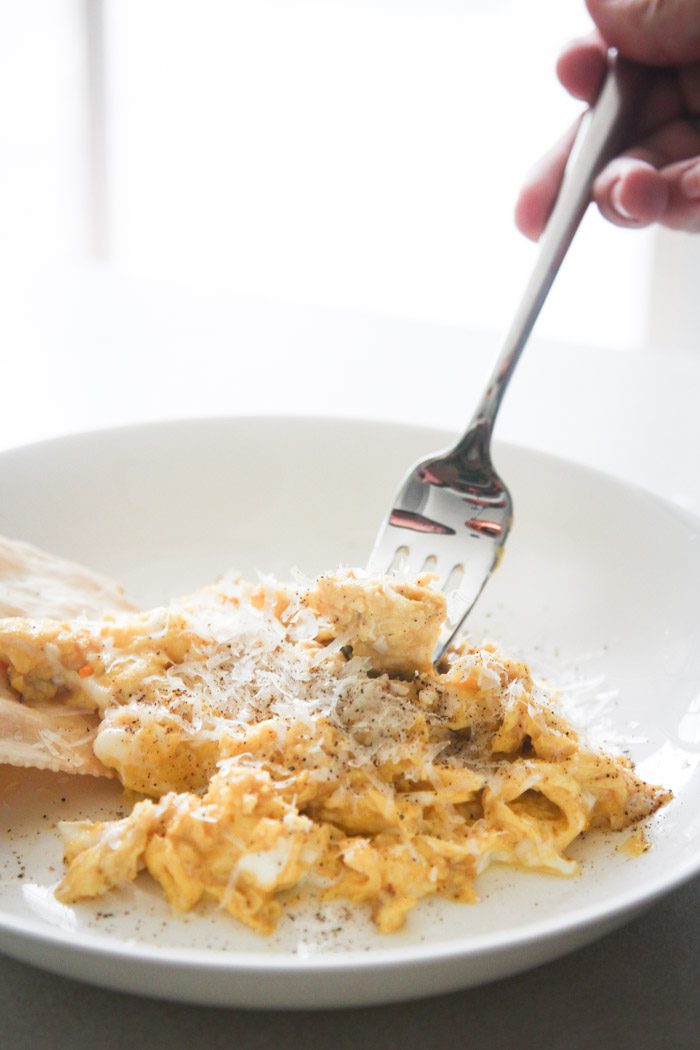
The key is to use a fresh, coarse grind of pepper so that you get both the creaminess of the eggs and melting cheese and the sharp bite of the pepper in every mouthful. So delicious!
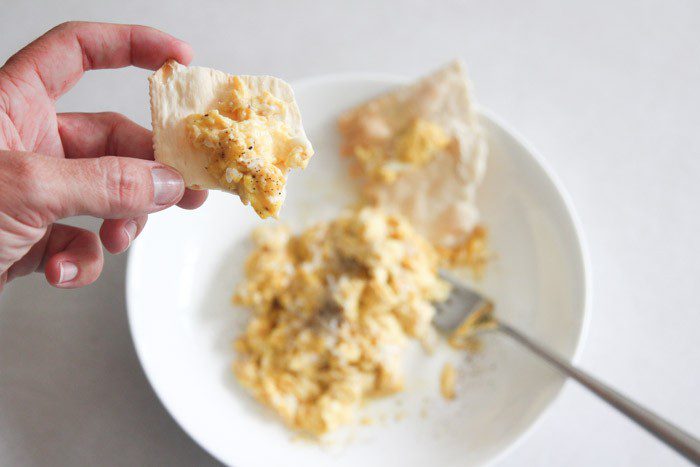
P.S. Perfect soft-cooked eggs. Sticky buns. And lemon-rosemary buckwheat pancakes.




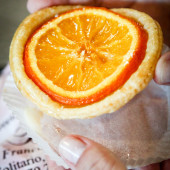

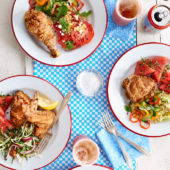































15 Comments